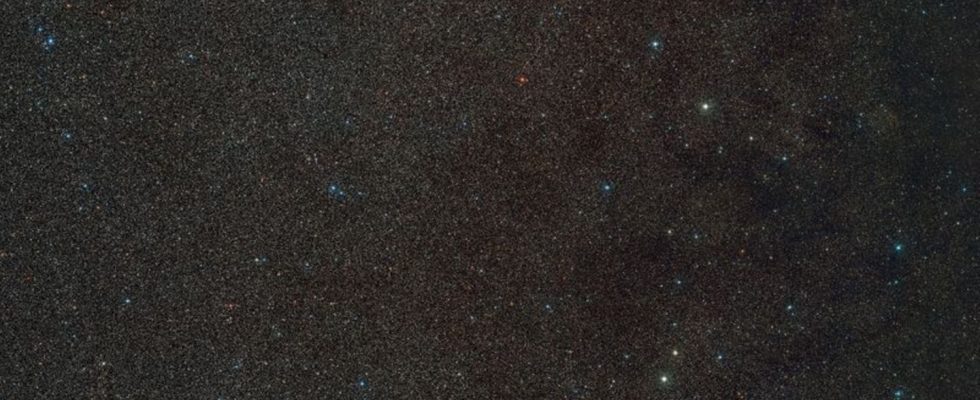astronomy
Huge black hole discovered in the Milky Way
The handout shows a wide-angle view of the surroundings of “Gaia BH3”, the most massive stellar black hole in our galaxy. The black hole itself is not visible here, but the star orbiting it is in the center of the image. photo
© D. De Martin./ESO/Digitized Sky Survey 2./dpa
There are numerous black holes in the Milky Way. Researchers have now discovered a particularly impressive specimen – very close to us.
The tumbling around of a star has led researchers to a particularly massive black hole in the Milky Way alerted. The European Southern Observatory (Eso) based in Garching near Munich announced that it is the most massive stellar black hole known to date in our galaxy. The giant called “Gaia BH3” has around 33 times the mass of our sun. Stellar black holes found so far in the Milky Way measure on average only ten times the mass of the Sun, the previously largest known one – “Cygnus X-1” – about 21 times the mass of the Sun. Stellar black holes form from stars.
“Nobody expected to find a massive black hole lurking nearby that has so far remained undetected,” Eso quotes astronomer Pasquale Panuzzo of the Observatoire de Paris as saying. “You only make this kind of discovery once in your research life.” According to Eso, the black hole is extremely close to Earth at a distance of “only” 2000 light years. A light year is the distance that light travels in one year – a distance of 9.46 trillion kilometers.
Stellar and supermassive black holes
The scientists made the discovery while checking observations from the European probe “Gaia” for data release. The black hole’s companion star is set into a kind of tumbling motion by its massive companion – and it was noticeable. The European Space Agency’s (Esa) “Gaia” mission is intended to record the positions, movements, distances and brightness of almost two billion celestial bodies.
Black holes are objects with gravity so strong that not even light can escape them. They are formed when large stars with many times the mass of our sun explode as supernovas at the end of their existence and the remaining star collapses.
Aside from stellar black holes, there are supermassive black holes that are suspected to be at the centers of most galaxies. These black holes can have billions of times the mass of our Sun. The most massive in our galaxy is “Sagittarius A*” at the center of the Milky Way, which is about four million times as massive as the Sun.
The analyzes of the new discovery were published in the journal “Astronomy & Astrophysics”.

